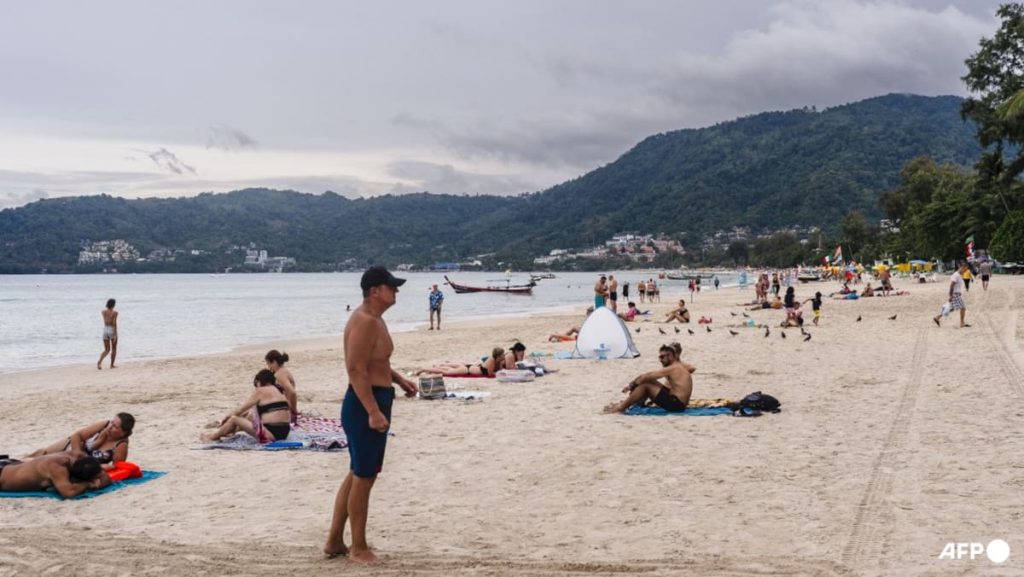The serene waters off Phuket, Thailand, were marred by tragedy on Tuesday, January 14th, as a collision between two jet skis claimed the life of one Chinese tourist and injured another. This incident, reported by Chinese state broadcaster CCTV citing the Chinese embassy in Thailand, casts a somber shadow over the popular tourist destination, especially as it comes just a day after a separate maritime incident involving Chinese tourists in the same region. While the cause of the jet ski collision remains under investigation, it underscores the potential risks associated with recreational activities in bustling tourist hotspots, raising questions about safety regulations and oversight. The timing of this tragedy is particularly poignant, as it precedes the Lunar New Year break, a period traditionally marked by increased travel for Chinese tourists.
The jet ski collision follows closely on the heels of a capsizing incident involving a catamaran off the coast of Koh Racha island, north of Phuket, on Monday, January 13th. The catamaran, carrying 33 Chinese tourists and 5 crew members, overturned, prompting a swift rescue operation. Fortunately, all passengers and crew were rescued without any reported casualties. While the successful rescue operation is a testament to the preparedness and effectiveness of local emergency services, the back-to-back nature of these incidents involving Chinese tourists raises concerns about the overall safety environment in the region, particularly during peak tourist seasons. The incidents may prompt a review of safety protocols and potentially lead to increased vigilance and preventative measures to ensure the well-being of visitors.
These recent incidents highlight the growing importance of Chinese tourism to Thailand’s economy. In 2019, Chinese tourists constituted the largest group of visitors to the Southeast Asian nation, with a staggering 6.7 million visits recorded. This influx of tourists represents a significant contribution to Thailand’s tourism sector, generating revenue and supporting local businesses. However, the recent incidents underscore the delicate balance between welcoming large numbers of tourists and ensuring their safety and well-being. Maintaining this balance will be crucial for Thailand’s continued success in attracting and retaining Chinese tourists in the long term.
The jet ski collision and the catamaran capsizing, while distinct incidents, raise common questions about safety regulations and oversight in tourist destinations. Are current safety measures adequate and effectively enforced? Are tour operators and recreational service providers sufficiently trained and equipped to handle emergencies? These questions will undoubtedly be at the forefront of discussions following these incidents, as authorities seek to understand the root causes and implement measures to prevent similar occurrences in the future. A thorough investigation into both incidents will be essential to determine the contributing factors and identify any areas where improvements can be made.
The timing of these incidents, just before the Lunar New Year break, adds another layer of complexity to the situation. The Lunar New Year is a major holiday period for Chinese travelers, and Thailand is a highly sought-after destination. The increased influx of tourists during this period puts additional strain on local resources and infrastructure, potentially increasing the risk of accidents. It is imperative that Thai authorities take proactive steps to address potential safety concerns and ensure that adequate resources are allocated to manage the anticipated surge in tourist activity. This may include increased patrols, stricter enforcement of safety regulations, and enhanced communication with tour operators and local businesses.
The incidents involving Chinese tourists in Phuket serve as a stark reminder of the importance of prioritizing safety and vigilance in tourist destinations. While the allure of exotic locales and thrilling activities draws millions of visitors each year, it is crucial to remember that safety should always be paramount. Both tourists and service providers have a shared responsibility to ensure a safe and enjoyable experience. For tourists, this means adhering to safety guidelines, respecting local regulations, and exercising caution when engaging in recreational activities. For service providers, it means maintaining high safety standards, providing adequate training to staff, and being prepared to respond effectively in emergencies. A collaborative approach, with open communication and a shared commitment to safety, is essential to ensuring that tourism remains a positive and enriching experience for all.

